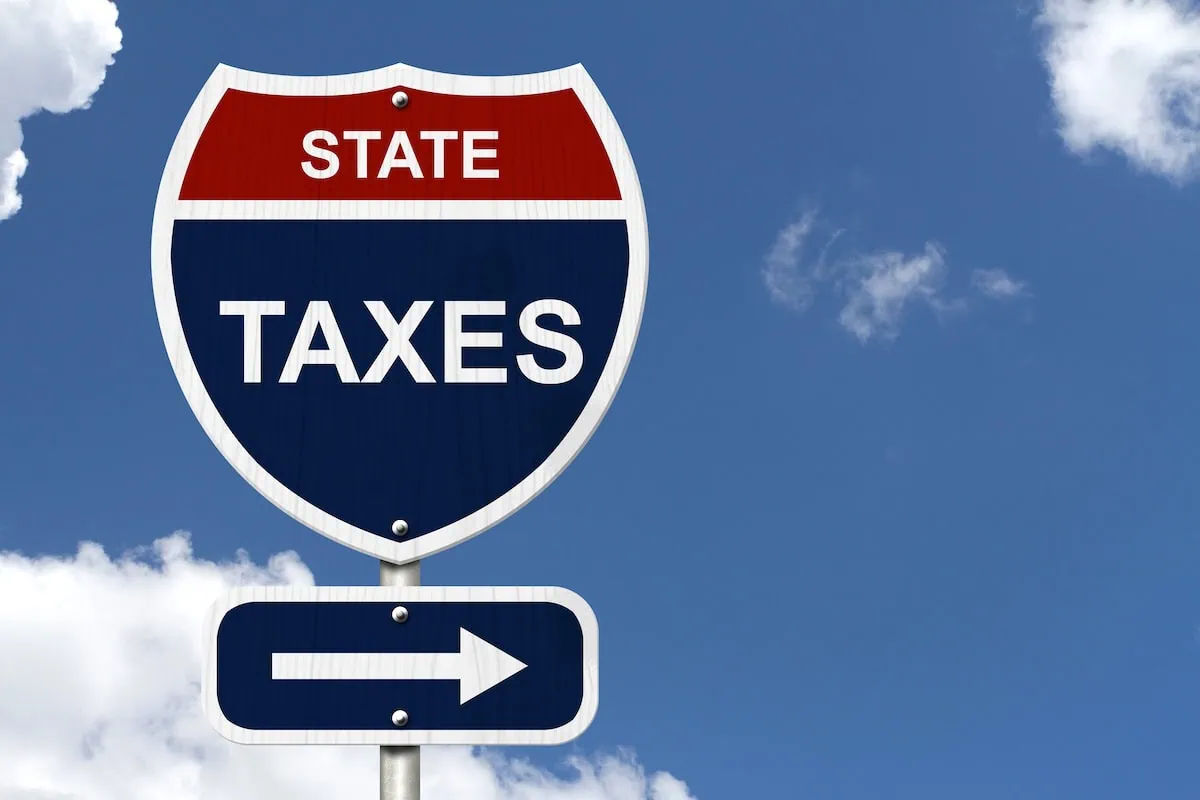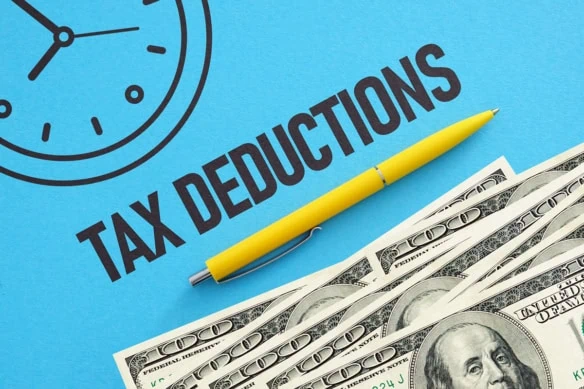The “One Big Beautiful Bill” (OBBB) that President Trump signed into law on July 4 made significant changes to the deduction for State and Local Taxes—nicknamed the “SALT” deduction. These changes impact the deduction’s cap, which places a limit on the total amount of your SALT deduction each year.
The SALT deduction cap is controversial, since its impact often depends on where you live or your income. This made revising the cap a politically difficult task.
Nevertheless, the SALT cap was increased by the OBBB, which means many taxpayers will be able to write off more of their state and local taxes. Well, at least for a while.
Read on to learn more about the deduction, its cap, and how the OBBB changed the limit.
What Is the SALT Deduction?

To understand the SALT deduction cap, you first need to know a few things about the SALT deduction itself.
This federal deduction is for certain state and local taxes you paid during the tax year. You can only deduct state and local taxes on your federal income tax return if you claim itemized deductions on Schedule A. However, you can’t claim itemized deductions and the standard deduction on the same return. In most cases, you can pick whichever one—itemized deductions or the standard deduction—that saves you the most money. If you pick the standard deduction, you can’t claim the SALT deduction.
The SALT deduction also covers more than just your state income taxes. For instance, you can generally deduct state and local real estate taxes, too. Property taxes on cars, boats, and other personal items are also deductible if the tax is based solely on the property’s value and is imposed on an annual basis.
If you pay more sales tax than state and local income taxes during the year (e.g., if you live in a state that doesn’t have an income tax), you can deduct your sales tax instead of your income tax (but not both). If that’s the case, you can deduct either the actual amount of sales tax you paid during the year or an estimated amount. To come up with an estimate, you must use the IRS’s “optional state sales tax tables,” which are found in the instructions for Schedule A, or the IRS’s online Sales Tax Deduction Calculator.
When Was the SALT Deduction Capped?

Not too long ago, there was no limit on the amount of state and local taxes that itemizers could deduct on their federal return.
That all changed when the Tax Cuts and Jobs Act (TCJA) of 2017 was enacted.
One of the many changes made by the TCJA was to place a $10,000 limit on the SALT deduction ($5,000 if you were married and filing a separate return from your spouse). This cap was first imposed for the 2018 tax year and remained at $10,000 through 2024.
How Much Is the Current SALT Cap?

The OBBB raises the SALT cap deduction significantly for 2025, and then nudges it up an additional 1% for each of the next four years. However, the increases are only temporary, and they’re wiped out if your income is too high.
For the 2025 to 2029 tax years, the SALT deduction cap for most taxpayers is as follows (it’s half as much for married taxpayers filing separately):
— 2025: $40,000
— 2026: $40,400
— 2027: $40,804
— 2028: $41,212
— 2029: $41,624
However, for those years, your SALT cap is gradually reduced—but not below $10,000—if your modified adjusted gross income (MAGI) is above a certain amount. The threshold amounts for most taxpayers are as follows (they’re half as much for married taxpayers filing separately):
— 2025: $500,000
— 2026: $505,000
— 2027: $510,050
— 2028: $515,151
— 2029: $520,302
For every dollar your MAGI is over the applicable threshold, the SALT cap is reduced by 30 cents. But again, the limit won’t drop below $10,000.
In 2030, the SALT cap drops back down to the original $10,000 amount, and there’s no phase-out.
Young and the Invested Tip: MAGI is equal to the adjusted gross income reported on your tax return, plus any (1) foreign earned income or housing costs exempt from tax, and (2) income exempt from tax for residents of Guam, American Samoa, the Northern Mariana Islands, or Puerto Rico.
Related: Our Guide to the New Senior Tax Deduction
How Does the SALT Cap Work?

Let me illustrate how the SALT cap works.
Suppose you pay $48,000 in state and local taxes in 2025. If you itemize on your federal tax return for that year, you can deduct $40,000 of those taxes. However, the remaining $8,000 in state and local taxes is not deductible on your federal return (although it might be on your state tax return).
The limit also applies to the total amount of deductible state and local taxes, not to any single type of tax. So, for example, if you paid $21,000 in state income taxes, $18,000 in real estate taxes, and $8,000 in personal property taxes in 2025 (for a total state and local tax bill of $47,000), your deduction is still capped at $40,000 even though each separate type of state or local tax was less than $40,000.
Related: 5 New Tax Deductions In the ‘One Big Beautiful Bill’
Who Is Impacted by the SALT Cap?

The SALT cap affects a relatively small number of taxpayers—and they’re mostly higher-income people.
First, remember that you have to itemize to deduct state and local taxes. Before the 2018 tax year, approximately 30% of all taxpayers itemized. However, the TCJA nearly doubled the standard deduction and either eliminated or reduced certain itemized deductions. As a result, only about 10% of taxpayers itemize now.
Those who do itemize also tend to be wealthier taxpayers. That’s because they’re the ones whose itemized deductions—such as for state and local taxes, mortgage interest payments, and charitable deductions—are more likely to be higher than their standard deduction.
In addition, a lot of people don’t pay more than the SALT cap in state and local taxes per year, and therefore can still claim their full SALT deduction if they itemize. Again, the SALT cap tends to hurt wealthier taxpayers, because they’re typically the ones who pay more than the cap per year in state and local taxes.
Finally, people who live in states with higher tax rates—such as California, Illinois, New York, New Jersey, Maryland, and Connecticut—are more likely to have their SALT deduction capped. That makes sense: Higher rates make it more likely that your state and local taxes will exceed the SALT deduction limit. If you live in a low-tax state and have a modest income, there’s a good chance you won’t be impacted by the SALT cap even if you itemize.
Since the cap tends to have the greatest impact on wealthier people in high-tax states, they benefit the most by the OBBB’s increased limits.
Related: Federal Tax Brackets and Rates
Are There Ways Around the SALT Cap?

Most states have enacted laws that help owners of certain businesses—such as partnerships, S corporations, and many limited liability companies (LLCs)—get around the SALT deduction cap. These types of businesses, which are called pass-through entities, don’t pay federal income taxes. Instead, their income, gains, losses, deductions, and credits are “passed through” to the owners, who claim them on their personal income tax returns.
The SALT cap workarounds vary from state to state. However, they generally involve the business itself paying a special elective state tax. That tax essentially covers the state income taxes the owners would owe on the income that’s passed through from the business to them.
Because the SALT deduction cap doesn’t apply to businesses, all of the special tax—even if it’s more than the cap—can be used to reduce the taxable income that’s passed through to the owners. If the owners are getting less taxable income from the business, their federal income tax bills will be lower, too.
In addition, the owners typically receive some sort of state income tax deduction, credit, or exclusion. This compensates them for the reduced income they receive from the business.
Do you want to get serious about saving and planning for retirement? Sign up for Retire With Riley, Young and the Invested’s free retirement planning newsletter.
Copyright © 2025 by Rocky Mengle. All rights reserved. Used with permission.
Related: 13 Best Long-Term Stocks to Buy and Hold Forever

As even novice investors probably know, funds—whether they’re mutual funds or exchange-traded funds (ETFs)—are the simplest and easiest ways to invest in the stock market. But the best long-term stocks also offer many investors a way to stay “invested” intellectually—by following companies they believe in. They also provide investors with the potential for outperformance.
So if you’re looking for a starting point for your own portfolio, look no further. Check out our list of the best long-term stocks for buy-and-hold investors.
Related: 10 Best Monthly Dividend Stocks for Frequent, Regular Income

The vast majority of American dividend stocks pay regular, reliable payouts—and they do so at a more frequent clip (quarterly) than dividend stocks in most other countries (typically every six months or year).
Still, if you’ve ever thought to yourself, “it’d sure be nice to collect these dividends more often,” you don’t have to look far. While they’re not terribly common, American exchanges boast dozens of monthly dividend stocks.
Please Don’t Forget to Like, Follow and Comment

Did you find this article helpful? We’d love to hear your thoughts! Leave a comment with the box on the left-hand side of the screen and share your thoughts.
Also, do you want to stay up-to-date on our latest content?
1. Follow us by clicking the [+ Follow] button above,
2. Subscribe to Retire With Riley, our free weekly retirement planning newsletter, and
3. Give the article a Thumbs Up on the top-left side of the screen.
4. And lastly, if you think this information would benefit your friends and family, don’t hesitate to share it with them!





